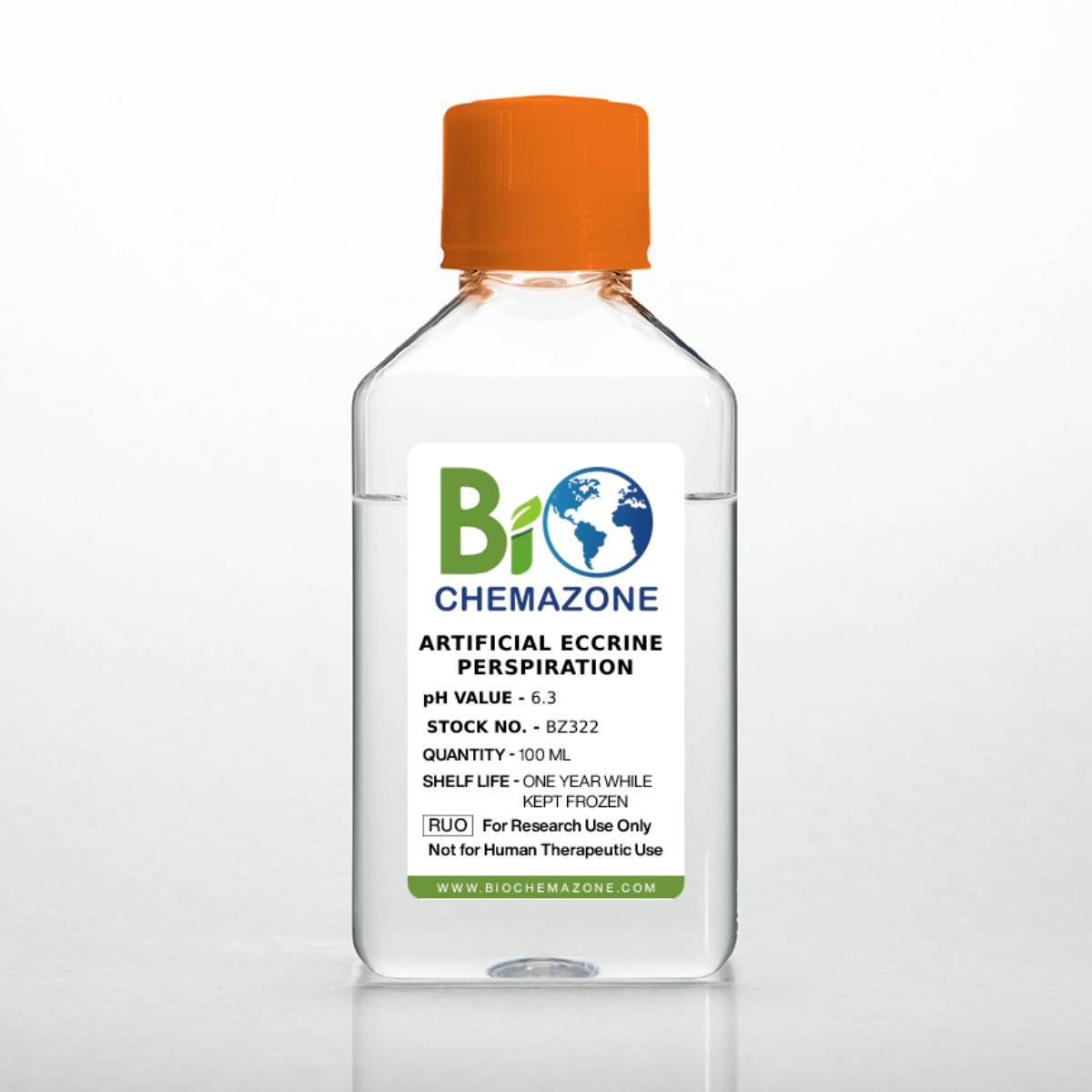- 17 次围观

Tris Acetic Acid (TAE buffer)
Name Tris-acetic acid electrophoresis buffer pH 8.3 (50×TAE)
Specification 50X TAE (Customizable), pH 8.3 (Customizable)
Pack size: 100 mL | 200 mL | 500 mL |1000mL (Customizable)
Store at RT, valid for 12 months.
50X TAE Buffer (Tris-acetate-EDTA) is used for electrophoresis of nucleic acids in agarose and polyacrylamide gels. You can use this buffer for both genomic and large supercoiled DNA, and you can also use this as both a running and a gel preparation buffer.
TAE Buffer Applications
• Electrophoresis of nucleic acids in agarose and polyacrylamide gels • Used both as a running buffer and as a gel preparation buffer • Filtered through a 0.22 µm membrane • Recommended for resolution of RNA and DNA fragments larger than 1500 bp, for genomic DNA and for large supercoiled DNA
Note TAE buffer has a relatively low buffering capacity. Therefore, periodic replacement of the buffer during prolonged electrophoresis is recommended.
TAE Buffer Product Introduction
TAE is the most widely used nucleic acid electrophoresis buffer in biology, mainly used for agarose gel electrophoresis of DNA. The main components of TAE are Tris-acetate and EDTA. The mobility of double-stranded linear DNA during electrophoresis is faster, and the separation effect of fragments larger than 13kb is good when electrophoresis. In addition, the TAE buffer system is also suitable for electrophoresis when recovering DNA fragments.
TAE is the most widely used buffer system. Its characteristic is that the supercoil is more in line with the actual relative molecular mass during electrophoresis (the relative molecular mass measured during electrophoresis in TBE will be greater than the actual molecular mass), and the mobility of double-stranded linear DNA is higher than that of the other two buffers. It is about 10% faster. When electrophoresing fragments are larger than 13kb, using a TAE buffer will achieve better separation. In addition, it is easy to use the TAE buffer system for electrophoresis when recovering DNA fragments. The disadvantage of TAE is that the buffer capacity is small, and long-term electrophoresis (such as overnight) cannot be used unless there is a circulation device to exchange the two-pole buffer. TAE is the most widely used buffer system. Its characteristic is that the supercoil is more in line with the actual relative molecular mass during electrophoresis (the relative molecular mass measured during electrophoresis in TBE will be greater than the actual molecular mass), and the mobility of double-stranded linear DNA is higher than that of the other two buffers. It is about 10% faster, and the TAE buffer will achieve better separation when electrophoresing fragments larger than 13kb. The disadvantage of TAE is that the buffer capacity is small, and long-term electrophoresis (such as overnight) cannot be used unless there is a circulation device to exchange the two-pole buffer.
TBE is characterized by strong buffering capacity. TBE can be used for long-term electrophoresis, and the separation effect is better when used for electrophoresis of fragments less than 1kb. TBE is easy to cause high electro-osmosis when used in agarose gel, and the recovery rate of DNA fragments is reduced due to the interaction with agarose to generate non-covalently bound tetrahydroxyborate complexes, so it is not suitable for recovery electrophoresis use.
This product is a 50× concentrated solution with a working concentration of 1×, which can be used after being diluted 50 times with distilled water. If the product precipitates out, please put it in a 37℃ water bath to dissolve it, and it will not affect the use.
TAE Buffer Precautions
For your safety and health, please wear lab coats and disposable gloves.
TAE buffer is a buffer solution containing a mixture of Tris base, acetic acid, and EDTA.
In molecular biology, it is used in agarose electrophoresis typically for the separation of nucleic acids such as DNA and RNA. It is made up of Tris-acetate buffer, usually at pH 8.3, and EDTA, which sequesters divalent cations. TAE has a lower buffer capacity than TBE and can easily become exhausted, but linear, double-stranded DNA runs faster in TAE.TAE (Tris-acetate-EDTA) buffer is used as both a running buffer and in agarose gel. Its use in denaturing gradient gel electrophoresis methods for broad-range mutation analysis has also been described. TAE has been used at various concentrations to study the mobility of DNA in solution with and without sodium chloride. However, high concentrations of sodium chloride (and many other salts) in a DNA sample retard its mobility. This may lead to incorrect interpretations of the resulting DNA banding pattern.
Stock solution for 50x TAE. TAE buffer is a solution made up of Tris base, acetic acid, and EDTA (Tris-acetate-EDTA). It is a common buffer for DNA separation using standard agarose gel electrophoresis.
Tris Acetic Acid (TAE buffer) composition and customer’s specified configurations can be delivered upon request. Stabilizer, pH Value, Pack Size, and Contents of Tris Acetic Acid (TAE buffer) are customizable. Contact us for Customization: sales@coreab.cn Transportation and storage: Transportation at room temperature, storage at 4 ℃. For Longterm Storage Freeze it at -20 ℃
关于 Biochemazone™
人工模拟生物体液试剂和仪器的先驱
Biochemazone™是一家不断发展的生物科技公司,提供高品质、纯化的人工生物化学品、试剂和解决方案,如模拟唾液、模拟尿液、模拟汗液等,并开发学术研究单位、大学、医院、工业、政府和私人实验室。
我们的生化试剂经过全面测试,可满足对卓越品质、不妥协生物的研发需求,以具有竞争力的价格准确模拟真正的生物解决方案活动。
Biochemazone™在科学界建立了良好的声誉,其声誉建立在创新产品、客户服务和对细节的关注上。我们的质量声誉是在市场上取得有利地位以及与制造顶级合成生物产品(如人造唾液、人造尿液、人造皮脂、人造汗液、人造汗液、人造血清、人工血液、人工精液、人工耳垢等等……
欢迎消费品测试实验室和制造商联系 Biochemazone™或本地代理商以了解人工模拟生物流体液体和生化试剂的需求。

